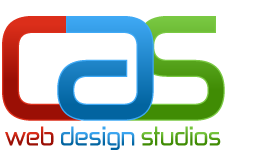CMS is an abbreviation for Content Management System. It is basically what it says. It helps business owners and web designers manage content. But more often than not, it is exactly this obviousness that creates confusion amongst web designers and business owners.To make sure there are no hiccups in managing your content, both parties need to have clarity on what content means to them.
The Content Illusion
Content in this context is a very ambiguous word. For web designers, the role of a CMS is to easily manage HTML, CSS, and Javascript files. As well as to help add functionality to a website like a blog, eCommerce store etc. without having to custom program each functionality (saving you time and money).
For business owners however, a CMS means being able to manage/edit/create content on the fly, without any (or limited) technical knowledge. So the content we're looking at here, is in the form of normal text, images, and maybe some other media, like videos.
So where's the problem here?
Web designers are always looking for a CMS full of features so they can provide a full service offering without needing to custom program a CMS for each website/client. Why? Cause they usually don't have the skill/knowledge to custom program what they need, or it won't be financially viable for the client to custom program a CMS for their website.
With all the features included to help web designers provide extra functionality, it makes it more complicated for the business owner to manage the website. On the flip side, the more client focused and easy a CMS is, the more it restricts creativity and overall functionality. So in essence, it is imperative to find a balance between the two.
The problem of preference
Web designers also tend to fall so in love with a CMS, that they use it for all their clients. One can understand this, as it is usually quite complicated to learn the ins and outs of a CMS. So, their chosen CMS becomes the preference, and they wrangle the CMS to fit every client.
Why is this a bad thing? Well, every client and website is different and have different needs. Every CMS is also different, and caters for different needs. So you can't (or at least shouldn't) always use the same tool! Instead, you should rather use the right tool for the job.
Being desperate for business, most web designers try take on every project using the same CMS or tool if you will. This almost always ends up with an unhappy business owner, as it either takes to long, or the wrangled solution is not what they really wanted.
By all means, web designers should use their favorite CMS, but they should also recognize and inform their client that a different CMS fits their requirements better. Then either use that CMS, or if they're not familiar with the CMS, refer them to a company that is.
The Solution
By asking the right questions at the right time a lot of headaches can be prevented.
By doing a simple needs analysis, you and your designer can determine what CMS will suit you best, how much editing freedom you really need, and what content should be managed by your designer to preserve some creative freedom. At the end of the day, this will save you money, save your designer time, and cultivate a great relationship between the two.
What experiences have you had with a CMS? Tell us about it in the comments below...






